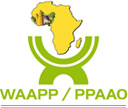
Sénégal 16 February 2018 /
Even with overwhelming evidence showing the West Africa Agriculture Productivity Program(WAAPP) has ‘substantial’ impact on economies of West African countries, efforts are currently underway to sharpen the focus of an even more ambitious and transformative iteration.
Known as the West Africa Agriculture Transformation Program (WAATP), this new intervention aims to considerably scale up the adoption of climate-smart technologies, enhance job creation and increase access to regional markets for targeted commodities.
What’s New?
The WAATP seeks to transform the agriculture industry sustainably by scaling up replicable innovations, technologies, and crop varieties using ICT tools and geo-mapping.
The geographical scope of coverage will extend to Central Africa with Cameroon among the participating countries. Chad and other Central African nations could potentially join.
“Despite the progress made, agricultural productivity in the West and Central Africa sub-region still lags behind the rest of the World,” says Dr. Niéyidouba Lamien, WAAPP Regional program coordinator.
“Focus has to go beyond productivity to address the overall issue of enhancing the food system to address the demand of an increasing population, address youth unemployment, climate change, migration, gender, and nutrition.”
Expected to be launched by late 2018, the WAATP will focus on five mutually reinforcing components:
- . Strengthening the new model for innovation development in West Africa
- . Accelerating large-scale adoption of improved technologies and innovations
- . Policies, markets, and institutional strengthening
- . Contingent emergency response
- . Project management, learning, monitoring and evaluation
“This program has assigned itself very ambitious targets because West and Central deserve that. Among the beneficiaries, at least 40 percent must be women. The technologies disseminated have to be linked to critical areas such as climate-smart agriculture, nutrition, mechanization, and processing. And it will be judged on the number of permanent and seasonal jobs it creates,” says Dr. Abdou Tenkouano, Executive Director of the West and Central Council for Agricultural Research and Development (CORAF).
What did the WAAPP Achieve?
More than two hundred technologies were released and adopted by almost 4,5 million producers and processors on about 4.8 million hectares. These technologies are available on www.mita.coraf.org.
WAAPP financed master degree and Ph.D. studies for 1021 youths. This represents 72% of men and 28% women. These young researchers are expected to replace most the agriculture researchers going on retirement. The nine national centers of specializations of countries participating in the program benefitted from the renovation of their infrastructure and new research laboratories were constructed. Two of the centers have been upgraded in regional centers of specialization. This includes the Dry Cereals Center based in Senegal and the Roots and Tuber center based in Ghana.
By increasing the major crops yields between 30% for dry cereals and 150% for rice, fruit, and tubers, the program has had a considerable impact on food security and caloric intake. Caloric consumption rose from 2,777 kcals to 2,964 kcals and the “hunger period” reduced by 28 to 55% according to the commodity. WAAPP has also increased by 34% the economic situation of farmers as well as transformed communities.
The West African Agriculture Productivity Program (WAAPP) was launched in 2008 and assigned the mission to boost productivity, reduce hunger, improve nutrition, create jobs, and support collaboration across borders.
Ten years after, the program reached close to nine million people directly and about 49 millionindirectly.
In 2016, the World Bank rated the WAAPP as the second-best project funded by the World Bank in Africa.
The WAAPP is an initiative of the Economic Community of West African States. It is funded by the World Bank and technically coordinated by CORAF.







